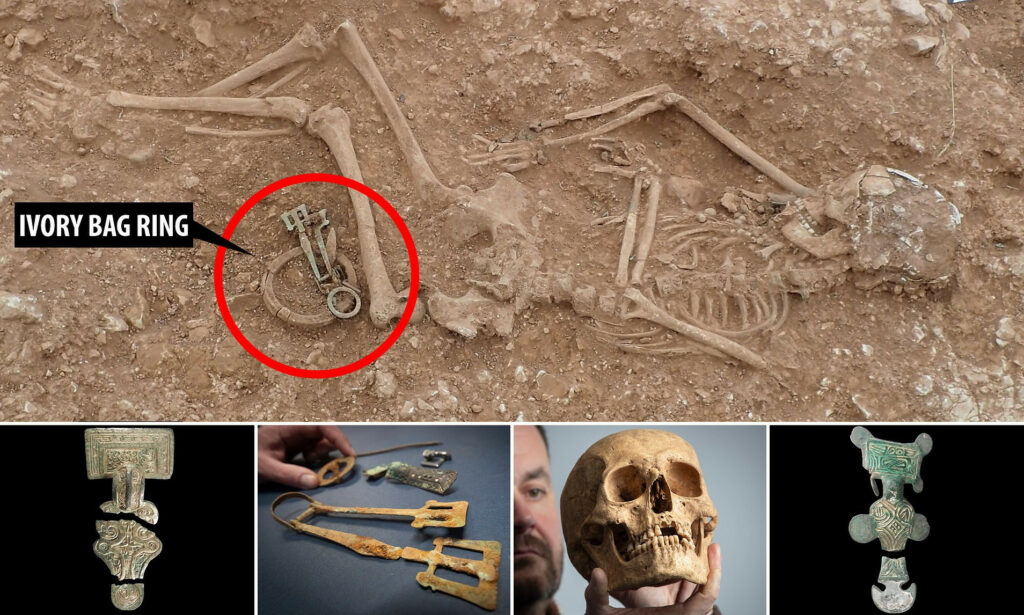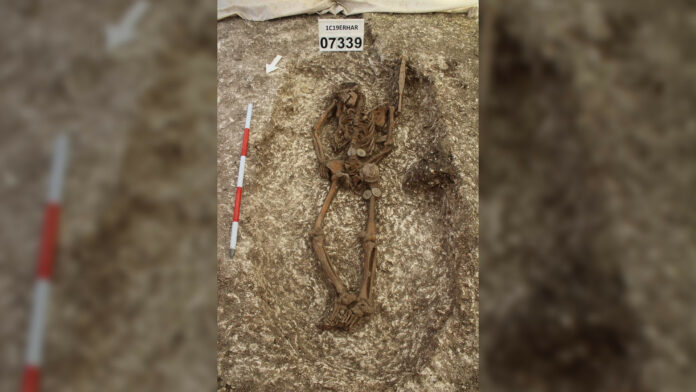A significant archaeological find has been made near London in advance of the High Speed 2 rail project. Over 100 skeletons were unearthed in what appears to be a wealthy pagan Anglo-Saxon burial ground dating back to the 5th century A.D., during the early years of the Anglo-Saxon settlement of Britain.
Largest Anglo-Saxon Cemetery Find Along HS2 Route

Lead archaeologist Rachel Wood described the discovery of 141 individuals as one of the largest Anglo-Saxon cemeteries ever found, saying “When we find Anglo-Saxon cemeteries, they’re likely to be a few individuals, or sometimes 20 or 30. But here we’ve got 141. It’s not the biggest ever, but it’s certainly up there.”
Rich Grave Goods Suggest High-Status Community
In addition to the human remains, archaeologists uncovered luxurious grave goods buried with the deceased, including:
- Silver and gold-decorated brooches and rings

- Personal grooming kits with tweezers and ear wax removal spoons
- Imported amber beads and glass drinking vessels from continental Europe
The expensive artifacts indicate the cemetery was the burial site of a wealthy Anglo-Saxon community, possibly even a single affluent landowning family over multiple generations.
Early Traces of Anglo-Saxon Settlement in Britain
Dating of the graves reveals this to be one of the earliest Anglo-Saxon sites in Britain. The later graves are from the 6th century, but the earliest date back to the 5th century, just a few generations after the end of Roman rule around 410 A.D.

Weapons Found, But Little Evidence of Violent Lives
While the graves contained weapons like an iron sword, spearheads, and shield remains, with one young man appearing to have been killed by a spear, the archaeologists found scant evidence that those buried had lived particularly violent lives filled with battles against the Romano-British. Knives were also common grave goods, but likely served as everyday eating utensils rather than weapons.
Discovery Challenges “Dark Ages” Narrative
Wood suggested these findings paint a more nuanced picture of the post-Roman, pre-Anglo-Saxon kingdom period in Britain, often called the “Dark Ages” and portrayed as an era of constant warring between the Romano-British and Anglo-Saxons.
“These are highly-cultured groups of people,” she explained. “They are only perceived as uncultured because they didn’t write anything down.” Wood said it’s even possible those buried may have had some British ancestry themselves, but adopted the prevailing Anglo-Saxon culture and burial customs.
Further analysis of the remains, such as isotope testing of the bones, may reveal more about the geographic origins and lives of this fascinating early Anglo-Saxon community buried in the heart of England.

